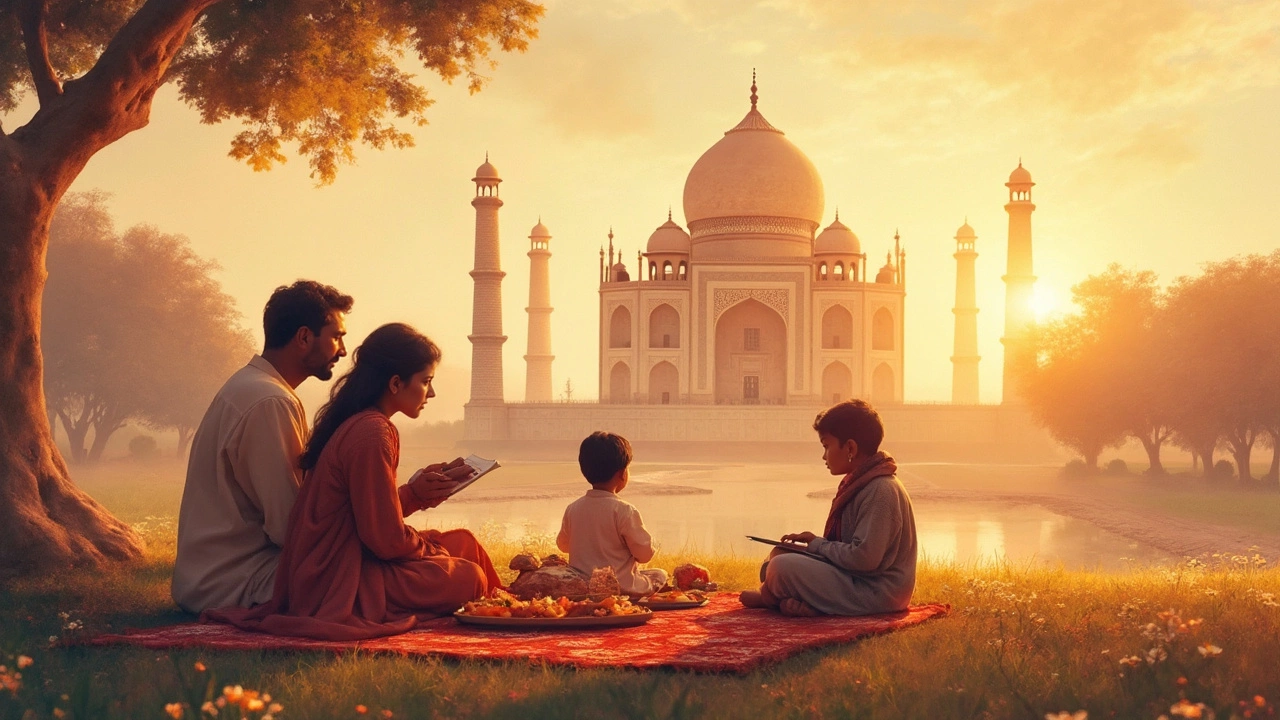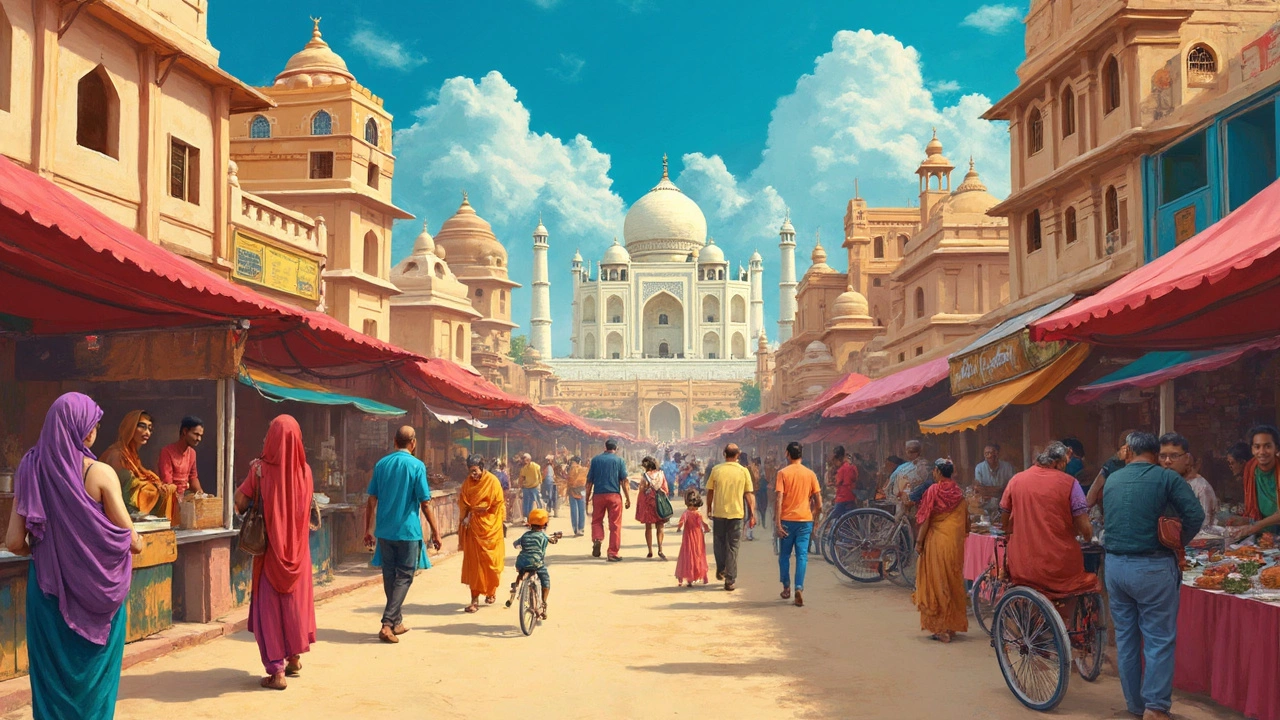When we talk about countries with the richest heritage, India's name naturally pops up. With over 40 UNESCO World Heritage Sites, India is like a giant time capsule, holding stories from its ancient civilizations, vibrant dynasties, and cultural shifts.
Imagine walking through the gates of the Taj Mahal, feeling the aura of eternal love that it embodies. Or traveling to Rajasthan and finding yourself surrounded by majestic forts that narrate tales of valor. Want more? Head south to Tamil Nadu, where the temples are so intricately designed, they almost seem like stone dictionaries of old Dravidian art.
What makes India's heritage stand out is its diversity. From the architectural brilliance of the palaces to the spirituality found in the mosques and temples, there's so much packed into this landscape. You see, it’s not just about bricks and stones; it's about traditions and beliefs that have been passed down through generations.
Introduction to India's Heritage
India’s heritage is like a vast, colorful tapestry woven from thousands of threads. Each thread tells its own story—unique and vibrant. From ancient trade routes to mighty empires, every era left its mark, shaping a cultural fabric that’s both fascinating and complex.
Now, why does India have such a rich heritage? The answer lies in its past. Let's consider the Indus Valley Civilization, one of the world's earliest urban cultures dating back to 2500 BCE. The remains of its cities, like Mohenjo-Daro, whisper stories of advanced urban planning and societal structure.
The Vedic Age and Beyond
Fast forward to the Vedic Age, which brought forth scriptures and deep philosophical insights. It didn't stop there. Over time, numerous dynasties, from the Mauryas to the Mughals, ascended and contributed their uniqueness to India's cultural melting pot. Their architectural legacies, like the stupas of Sanchi and the massive walls of Red Fort, showcase an evolution of style and thought.
More Than Just Monuments
India's heritage extends beyond tangible monuments. It includes intangible aspects like classical music, dance forms, and vibrant festivals celebrated today. Imagine attending the Kumbh Mela, the largest religious gathering in the world, or being mesmerized by a Kathakali performance in Kerala. These experiences offer glimpses into the cultural prowess that India possesses.
If you're diving into this rich tapestry, remember that each site or tradition isn't just a slice of history—it's a snapshot of India’s continuous, dynamic heritage journey.
Iconic Heritage Sites
Let's take a stroll through some of India's most iconic heritage sites that are nothing short of spectacular.
The Taj Mahal - Agra
The Taj Mahal is more than just a building; it's a symbol of love. Shah Jahan built it in memory of his beloved wife Mumtaz Mahal. Every year, millions of visitors flock to Agra to marvel at this creamy-white marble masterpiece. The gardens are perfectly symmetrical, offering a peaceful contrast to the bustling world outside. If you visit, try catching the reflection of the mausoleum in the Yamuna River at sunrise or sunset.
Jaipur City's Amber Fort
Amber Fort in Jaipur is a must-see. This massive fort, built with red sandstone and marble, sits atop a hill overlooking the Maota Lake. It's a mix of Hindu and Mughal architecture, with intricate wall paintings, mirror work, and carvings. Walk through the royal courtyards, and you'll almost hear the whispers of the past royals.
Ajanta and Ellora Caves - Maharashtra
If ancient art grabs your interest, the Ajanta and Ellora caves won't disappoint. Carved directly into the rock, these caves feature some of the finest examples of ancient Indian painting and sculpture. Ajanta is all about Buddhist religious art, while Ellora showcases a blend of Buddhist, Hindu, and Jain faiths. Remember to bring a camera—these carvings are breathtaking!
Sun Temple - Konark
In the eastern state of Odisha, the Sun Temple at Konark stands as a testament to ancient Indian craftsmanship. Designed as a colossal chariot for the sun god Surya, the temple is covered with detailed sculptures depicting various aspects of life in the 13th century. The annual dance festival held here is a great time to visit and experience Indian classical dance forms in a magical setting.
Qutub Minar - Delhi
Finally, there's the Qutub Minar in Delhi. It's the tallest brick minaret in the world and an exquisite piece of Mughal architecture. The tower is surrounded by several other antiques, including the Iron Pillar, which mysteriously hasn't rusted despite being over a millennium old.
Each of these heritage sites in India tells a story, offering a window into the country's rich past. They're not just places; they're a legacy of art, architecture, and history waiting to be explored.

Cultural Significance
The cultural tapestry that is India is vividly reflected in its numerous heritage sites. Each site is not just a tourist attraction but a living testament to the country's diverse cultural identity. Take the Ajanta Caves, for example. These rock-cut caves aren't just stunning; they tell stories from Buddhist scripture through intricate paintings and carvings, bridging ancient spiritual teachings to the modern day.
The Role of Architecture
The Mughal architecture you find in places like the Taj Mahal and Fatehpur Sikri is a perfect blend of Islamic, Persian, and Indian architectural styles, showcasing the synthesis of different cultural influences. These structures have historically been places where communities converge, exchanging ideas and traditions.
Preserving Traditions and Beliefs
Moreover, cultural sites in India like the Sun Temple in Konark are more than just architectural feats. They reflect intricate beliefs and practices, serving as epicenters for religious activities and festivals even today. This reflects the living traditions that continue to thrive around these monuments.
The influence of historical places in India extends beyond architecture. For instance, the Indian classical dance forms and music owe their evolution to these diverse cultural expressions seen across the nation. The temples of Khajuraho, famous for their erotic sculptures, have inspired classical dance forms that are still performed.
Stats and Numbers
| Site | UNESCO Status | Year Designated |
|---|---|---|
| Taj Mahal | Cultural | 1983 |
| Ellora Caves | Cultural | 1983 |
| Sun Temple, Konark | Cultural | 1984 |
These sites also contribute significantly to the local economy, attracting millions of tourists who bring economic benefits and job opportunities for locals. Understanding these heritage sites in India gives us a window into the changing paradigms of Indian culture, helping us appreciate the country's historical journey.
Tips for Visiting
Planning a visit to India's incredible heritage sites but not sure where to start? Let’s break it down with some handy tips to make your journey smooth and memorable.
Plan Ahead
India is huge, and so are its travel options. Prioritize your visits. If you’re on a tight schedule, make sure to hit the key spots like the Taj Mahal, Jaipur’s forts, and the Ajanta Caves. Always check the opening days and hours, as some sites may be closed on specific days.
Local Guides
Consider hiring local guides at the larger sites. They know the juicy stories and hidden corners that you might miss on your own. Plus, it’s a great way to support the local economy!
Dress Code
Many of these heritage sites are tied to cultural and religious significance. Dress modestly, covering your shoulders and knees, to respect local traditions. Carry a scarf if you’re planning to visit temples or mosques, as you might need to cover your head.
Travel Light
These places usually involve lots of walking, exploring, and sometimes climbing. Pack comfortable shoes and enough water. Avoid carrying too much, especially if you plan to move around quickly.
Respect and Preserve
These sites are not just tourist spots. They hold significant cultural value. Avoid touching or defacing anything, respect the rules, and use designated paths. Remember, each visitor can contribute to preserving these for future generations.
Safety First
While India is generally safe for travelers, it's wise to keep an eye on your belongings. Be cautious of touts and scams, especially around popular destinations. It's a good idea to keep your documents and valuables secure.
Following these tips will help you enjoy the treasures of Indian heritage without hassle. Get ready to take a deep dive into a culture that dates back thousands of years and is rich in every way imaginable!
